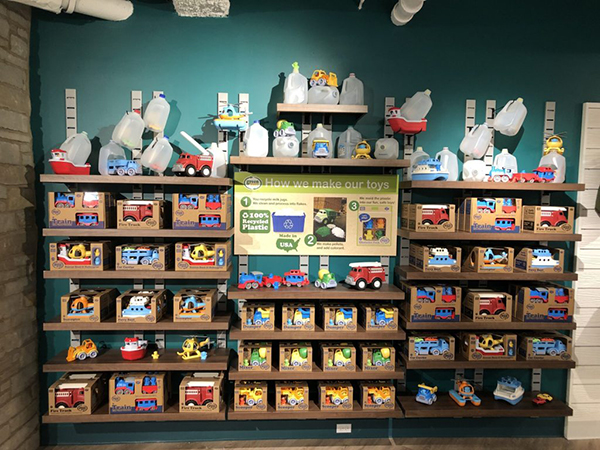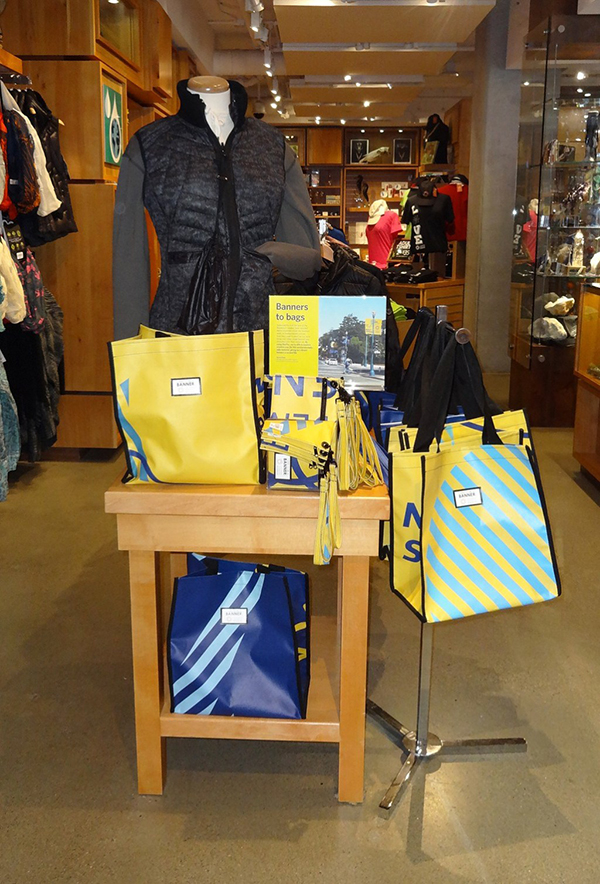Museum stores are an important place to reinforce an institution’s values, including sustainability. Here are tips on designing and operating with the environment in mind.
Joyce S. Lee & Andrea Froehle, Green Trends in Museum Retail, American Alliance of Museums, 27 January 2021
As a seamless extension of the museum experience and a culmination of the exhibitions on view, the museum store is uniquely poised to reinforce an institution’s mission and values. For many, increasingly, this includes sustainability.
In 2021, the topics of environmental responsibility and climate justice will see growing attention, as the Biden administration plans to prioritize them with steps like re-entering the Paris Agreement. This may lead to heightened scrutiny from consumers about sustainability. In fact, research shows that many Millennial and Gen Z buyers already consider a brand’s effort toward sustainability a prerequisite for making a purchase, and are willing to pay more for it.
When it comes to the unifying goal of protecting the planet, the museum store can be an effective vehicle for demonstrating the institution’s commitment toward conservation, and for inspiring guests to do the same.
“All spaces within a museum need to reflect a museum’s values and meet its visitors’ expectations for sustainability,” says Alison Rempel Brown, Board Member of the American Alliance of Museums and President of the Science Museum of Minnesota.
Here are some actionable steps museum retailers can take to create a positive environmental message and put sustainability on view:
Ecological Trends in Merchandising
- Ethical Sourcing: Finding vendors who manufacture goods responsibly and/or support ethical labor practices is a good first step. For instance, supporting businesses that use organic cotton can lower the impact on the environment, keep organic farmers in business, and accelerate wider changes in the apparel industry. Notebooks made from recycled paper, apparel made from recycled or organic textiles, and plush made without plastic beads are just a few examples we’ve seen in museum stores.
- Storytelling & Labels: By grouping different types of products around a central theme, shops can tell a broader “story” about protecting the planet and connect individual products to a richer context. Signage can educate guests with thought-provoking details about a product’s origin and related ecological facts. This type of storytelling brings the concept of sustainability to life, while encouraging guests to make responsible choices of their own.
- Merchandising Systems: Consider “greening” the displays and supporting items in your store, not just the products for sale. For example, plastic hangers are much less recyclable than other types and contribute to a disposable culture. Swap them for wood or bamboo, or create a folded apparel display to eliminate the need for hangers altogether.

Smart Store Design
A green store design can utilize responsibly sourced materials in nearly every aspect, from display features and fixtures to flooring and paint. Just as important as the visible design details for consumers are the behind-the-scenes eco-friendly decisions.
Here are some ways a retail environment can uphold a sustainable atmosphere through its design:
- Refresh the wall colors using zero-VOC, low-odor paint.
- Replace plastic bins and sign-holders with more recycled/reusable and eco-friendly materials.
- Maximize the use of LED light fixtures, whose longevity will benefit the environment and lead to additional maintenance savings.
- Use signage material from renewable forest resources. Look for certified sourcing labels that indicate renewable, virgin, and post-consumer recycled fibers.
- If choosing an artistic centerpiece or focal point for your store, work with the artists to create a design made with post-consumer or low-embodied energy materials, or in a manner that produces less waste during the creative process.
- For wall solutions, use one of the broadly available options made from recycled contents, some of which can be reconfigured over time. For example, a brick slat wall made from FSC-certified sources creates a dramatic backdrop in some museum stores.
- Choose a durable, modular eco-friendly flooring option, which will have a big impact over time versus carpet. Factor into your selection the ability to service the material easily through green cleaning protocols.

Green Building Strategies from Leadership in Energy and Environment Design (LEED)
- Follow the LEED guiding principles and start integrative design consultation early with the entire technical and operational team.
- Act responsibly during demolitions by sorting for recyclable and reclaimable materials and disposing of waste appropriately. Work with demolition contractors to record waste disposal and document recycling. Consult with the curatorial department if the museum already has a construction waste protocol in place.
- Use locally sourced building materials or those evaluated through lifecycle assessment whenever possible.
- Maximize window access to help the store use natural light and reduce the amount of energy needed to power artificial light.
Waste Reduction
In the age of online purchasing, the attention on packaging and delivery is a prime opportunity. First, proper bundling could eliminate unnecessary trips. Second, putting a focus on clean transportation will lead to a low-carbon delivery chain. As for packaging, much can be done to eliminate unnecessary plastics. Here are a few ways a retailer can work with the supplier to reduce the footprint of goods:
- In bulk shipments, bundle smaller items in one outer bag using biodegradable material, instead of individually wrapping them in plastic bags.
- Work with suppliers on an updated packaging design that eliminates plastic windows, plastic ties, and other unnecessary single-use plastics. Always find eco-friendly alternatives to traditional packing materials.
- For durable items, minimize box-within-box packaging to reduce shipping fees and storage space.

As museums evolve with a changing society, the merchandise available in their stores should also tell the story of that evolution. In being deliberate and intentional about how we direct these revenue-generating opportunities, we can build yet another new cultural angle towards sustainability.

